Manual vs. Automated Paint Mixing: Which Method Saves You Time and Money?
If you own or run a business, making your paint store or production line more profitable can be tough. Challenges like rising costs, employee wages, and efficiency all play a role. One way to improve these factors is through automation.
Hidden expenses can add up when supplying paint for large-scale projects like apartment complexes. Labor costs, in particular, often go unnoticed because businesses stick to traditional methods. However, as technology improves, things that were once expensive or impossible are now affordable and necessary to stay competitive.
Customer expectations are also changing. People want quick results and fast service. Gen Z, for example, often expects “no wait time” when ordering fast food, and this mindset extends to other purchases, including paint (1). Same-day delivery and instant internet responses are reshaping the marketplace.
Workforce trends are shifting, too. The baby boomer generation is the only age group with a growing labor force participation rate. Right now, they make up 23% of the workforce, but by 2033, that number is expected to rise to 23.8%, with the biggest increase among people 65 and older. Many workers over 55 prefer jobs that don’t require heavy lifting. Younger employees also tend to avoid physically demanding manufacturing jobs. (2, 3, 4)
At Radia, we’ve developed an automation system to tackle these challenges. Our system includes an ultra-efficient mixer, a conveyor to move buckets, and a lift system (5). In the right environment, automation can greatly improve profits.
Two Practical Comparisons of Labor, Time, and Costs
Motion Study: Manual vs. Automated Paint Mixing
A motion study is a good way to compare production methods. It involves tracking every movement needed to complete a task and calculating time savings where steps are eliminated. The type of movement, such as heavy lifting or awkward reaching, also affects efficiency.
For manual mixing, handling a 55-pound bucket includes these steps:
- Lifting the bucket onto a roller rack
- Tinting the bucket
- Moving the bucket to the mixer
- Pushing it into the mixer
- Closing the door and starting the mix
- Walking back to the tinter
- Tinting the next bucket
- Walking back to the mixer
- Opening the door
- Removing the bucket from the mixer
- Moving the bucket to the end of the line
- Lifting the bucket onto a pallet
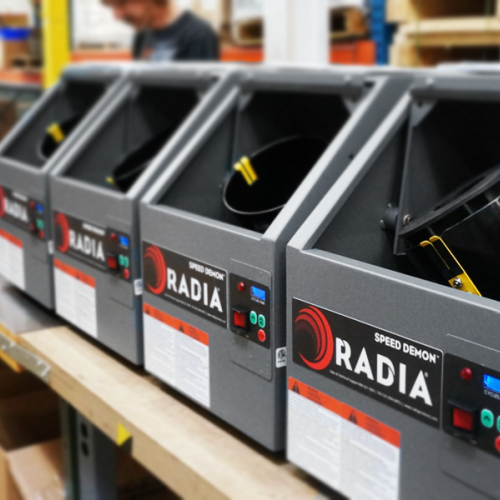
With automation, the process requires fewer movements:
- Assisted lift of the bucket onto the roller rack
- Tinting the bucket
- Sliding the bucket into the automation system
- Assisted lift of the bucket onto the pallet
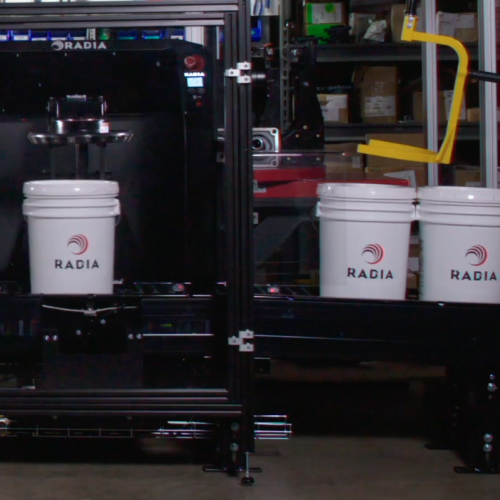
From this motion study, we can see:
- 66% of the motions are eliminated.
- The heavy lifting is eliminated.
- Large, awkward reaching motions are eliminated.
Side-by-Side Race: Manual vs. Automated Mixing
A real-life race compared one person using automation to two people mixing manually. The video in the following link was made at an actual customer site:
https://radiaproducts.com/automation/automation-roi
Start: 36 buckets, 1 pallet
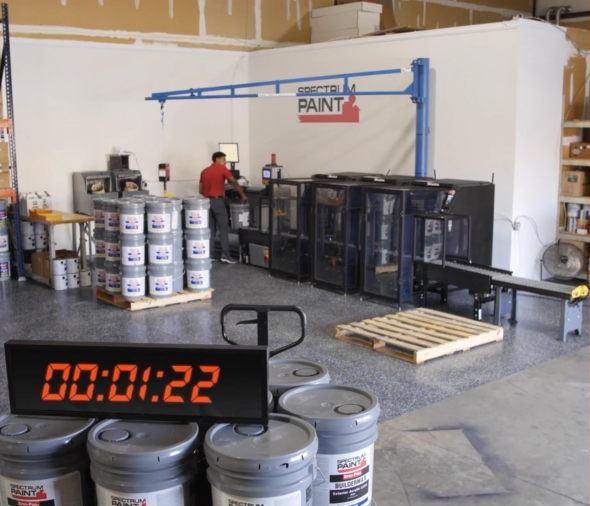
ONE OPERATOR
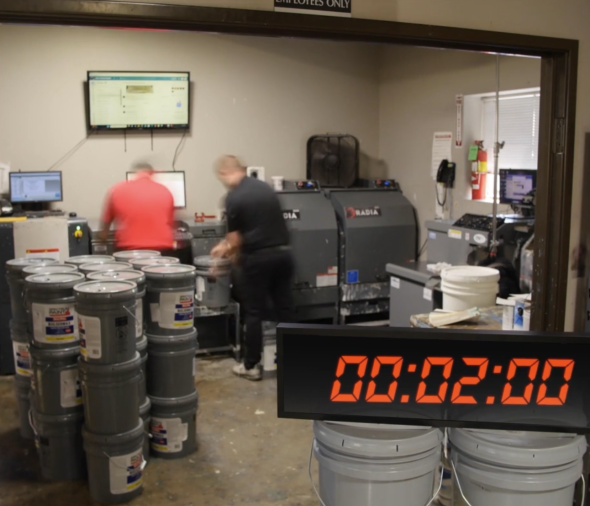
TWO OPERATORS
Near the End of the Race
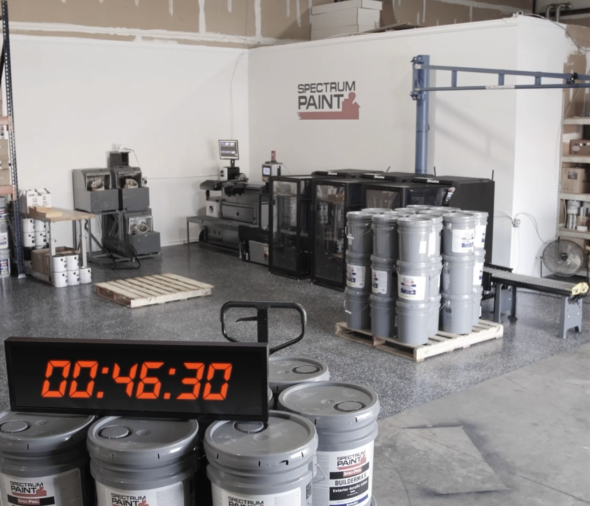
COMPLETE AT 43:60
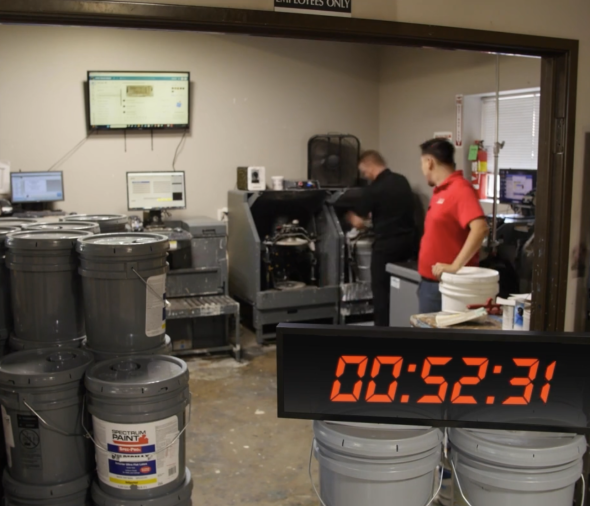
STILL WORKING, COMPLETE AT 53:30
The results showed:
- One person using automation was faster than two people working manually
- Moving buckets to and from mixers was eliminated
- Opening and closing the mixer door was eliminated
- Buckets could be loaded and unloaded during mixing
- Lifting weight was reduced from 55 pounds to just a few pounds
Hidden Benefits Missed By The Comparisons
Automation provides advantages beyond speed and efficiency:
- Faster service improves customer satisfaction
- Employees can focus on face-to-face customer interactions
- Workers avoid fatigue from lifting heavy buckets
- More people can do the job, regardless of age or physical strength
- Issues with labor availability are reduced
- Lower risk of back and lifting injuries
- Increased workplace safety
When does automation offer the best return on investment?
Automation offers the most benefit where high-volume orders occur. This could be 5 or 3.5-gallon buckets of paint or other coatings. High-volume commercial stores, industrial coatings suppliers, and manufacturers can all benefit from automation. Some customers with these high-volume orders include apartment complexes, office buildings, warehouses, or specialty coating suppliers.
The return on investment is typically more than studies suggest. Along with saving time, there is customer satisfaction from faster completion of an order, a larger pool of workers able to handle larger orders of heavy buckets, and the benefits of happier employees.
References
- (1) https://civicscience.com/three-quarters-of-fast-food-diners-expect-their-orders-in-5-minutes-or-less/
- (2) https://blog.robotiq.com/aging-workforce-challenges
- (3) https://www.bls.gov/emp/images/lf_aging.png https://www.bls.gov/emp/
- (4) https://www.bls.gov/emp/tables/civilian-labor-force-participation-rate.htm
- (5) https://www.youtube.com/watch?v=yHZcD6D8Wq8